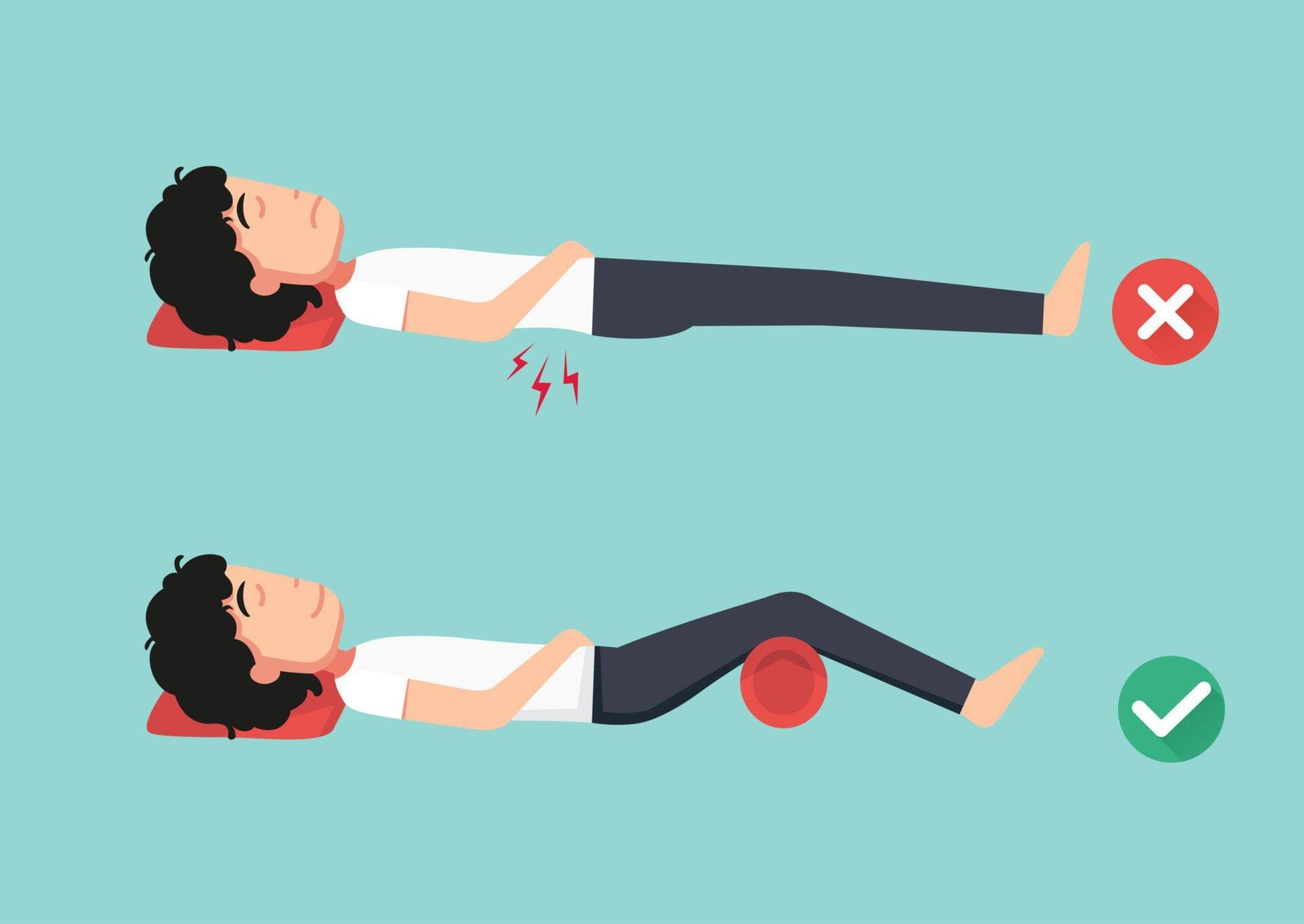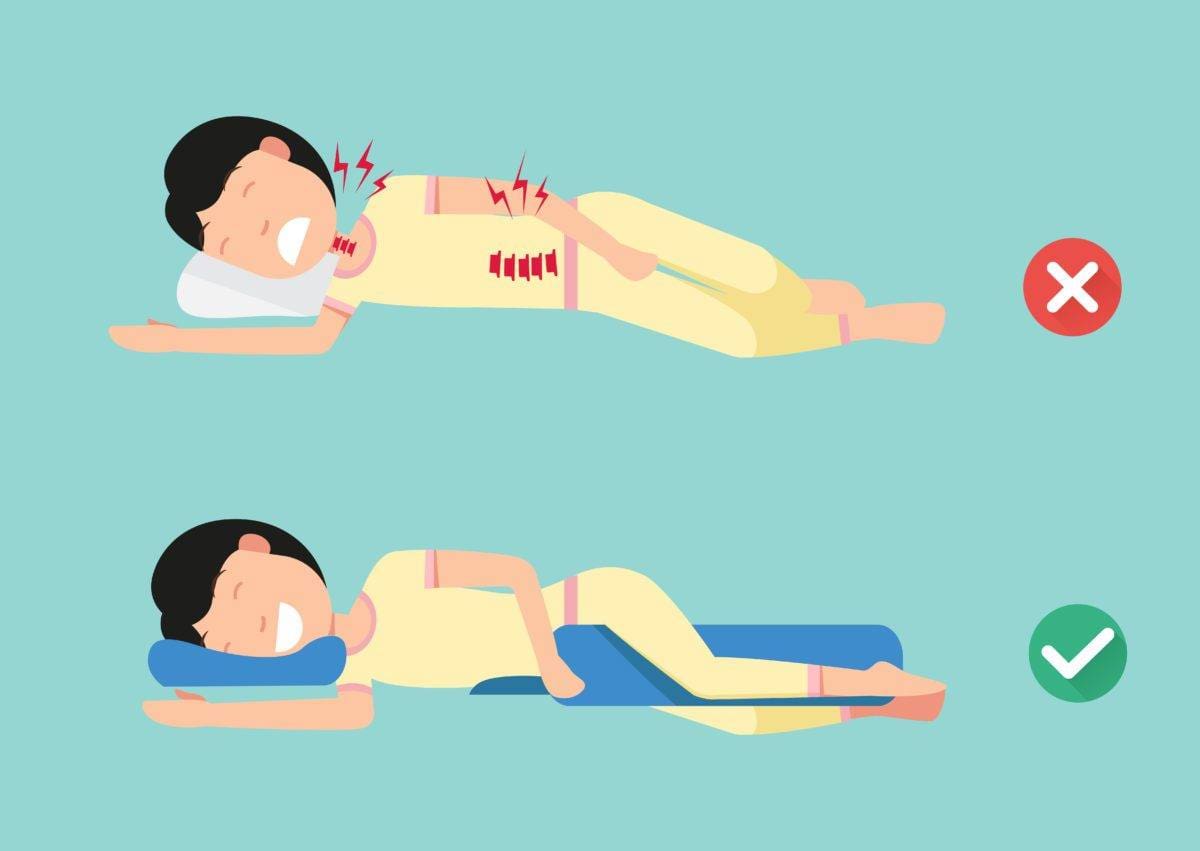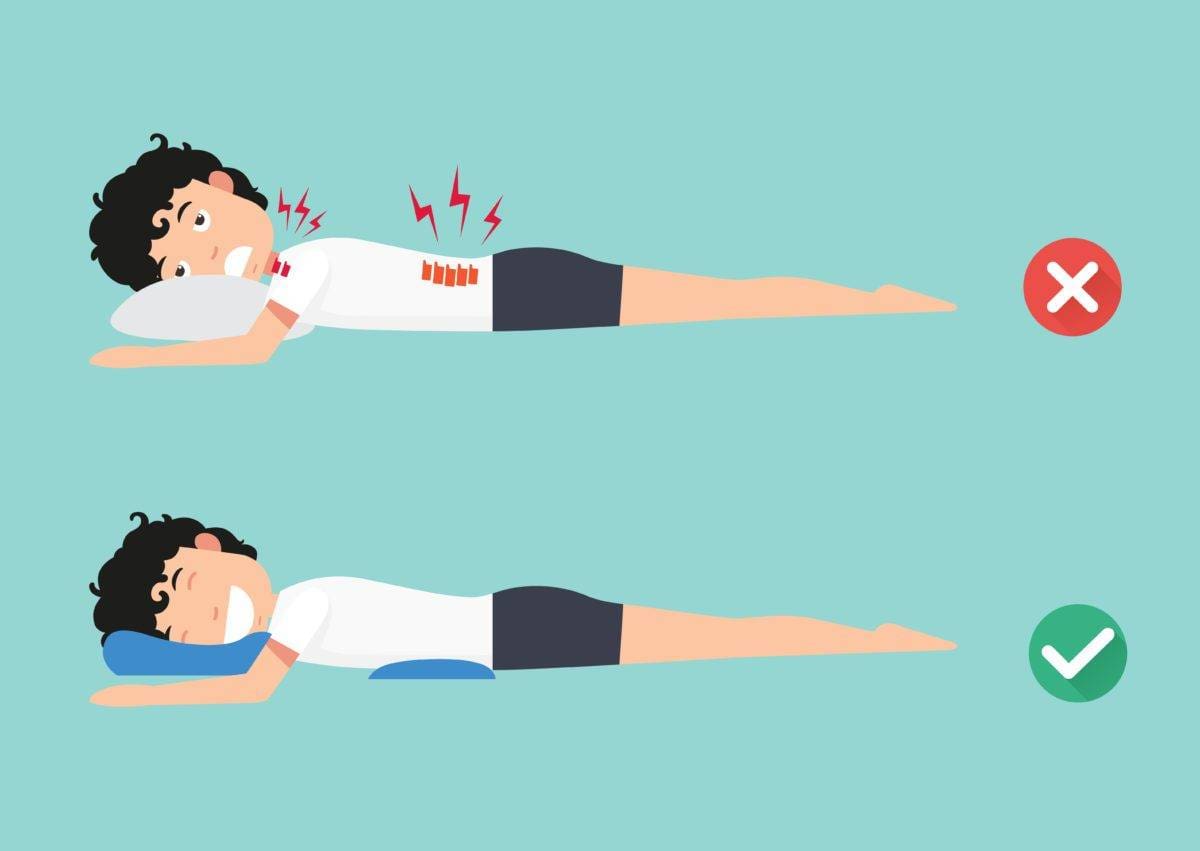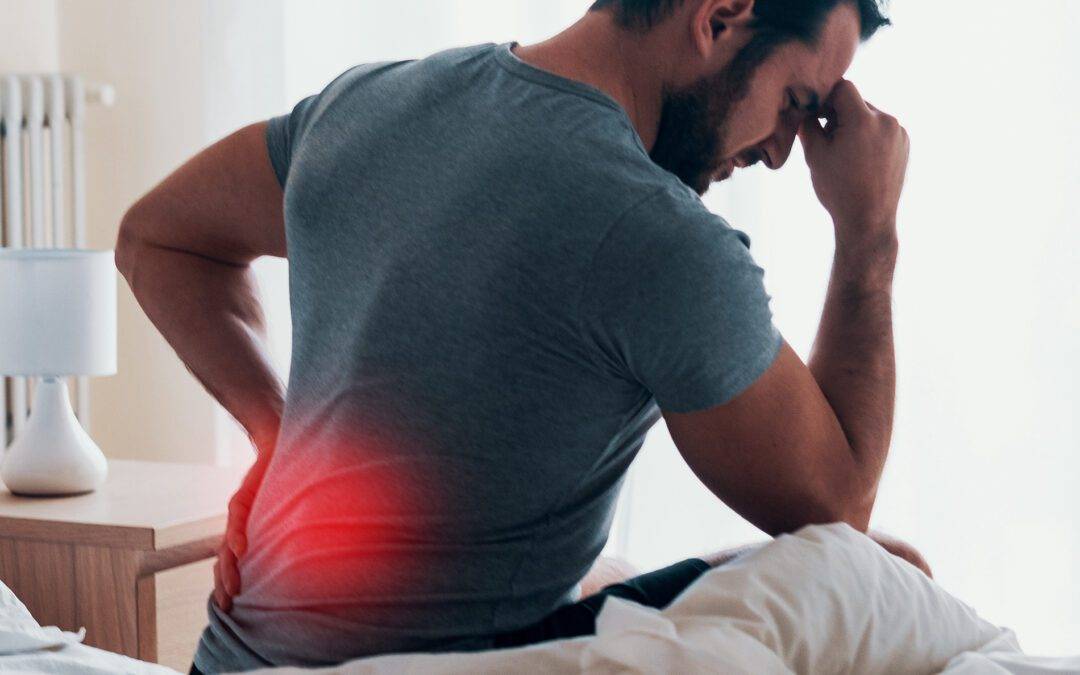By Dr. Trevor Neable, DC
4 Minute Read

Sleeping on Your Back:
Sleeping on your back, for many, is the best position for sleeping because it gives you the best chance at maintaining a neutral spine and avoiding unbalanced pressure on your back, hips and shoulders. If this is the position you prefer, a great trick to help with reducing low-back pain and stiffness in the morning is to place a pillow under your knees to help flex the hips slightly and maintain the normal curve of your lower back. If you want additional support you can try using a small, rolled towel under the small of your back. It is also important to support your neck with a pillow positioned right up against your upper shoulder blades. This allows for the pillow to support you under your neck, and not only under your head, which is not where you need the support. That being said, I do recognize this position may not be comfortable for everyone and for many, sleeping on your back can be challenging, as it a typical position that induces snoring or can be difficult for those with sleep apnea. Fortunately there are other sleep positions that are great alternatives.

Sleeping on Your Side:
I would consider sleeping on your side the second best position for most people. All it takes is a few simple changes in your sleeping position to take strain off your back and shoulders. If you sleep on your side, draw your legs up slightly toward your chest and put a pillow between your knees. I recommend using a full-length body pillow, as you can use the top end of the pillow to wrap your arms around, which helps reduce unnatural positions with your arms and shoulders. Be sure not to use a really thick pillow, as the goal is to separate the knees just enough so that they are each in line with your hips. This reduces rotation in the low back and symmetrical positioning of the pelvis while you’re laying on your side. Some evidence suggests that habitually sleeping on one side may contribute to muscle imbalances and pain. Therefore, try alternating the sides you sleep on either a few times a night or try falling asleep on a different side every night. Most snorers will also find side sleeping to be the most effective at reducing/preventing snoring — something their partners tend to really appreciate!

Sleeping on Your Stomach:
Sleeping on your stomach, known as the fully prone position, is the sleep position I rarely recommend (and discourage) to almost all of my patients. I say this because it is specifically strenuous on the joints of your low back because it causes your spine to be pushed into slight extension while you’re laying face down. This prolonged extension can lead to dysfunction and irritation of the low-back facet joints, which is a common low-back conditions I see every day in practice. In this position, your neck also needs to be fully rotated to one side or the other, which puts a lot of stress on these joints, muscles and ligaments of the neck and upper back. This torquing of the neck often leads to one-sided facet joint problems in the neck and upper back and muscular and ligament problems on the opposite side, creating pain, stiffness and sometimes spasm in the morning. But as with all sleep positions, I recognize that for some people this is the only way they can get a restful, uninterrupted sleep through the night. If this is true for you, you can reduce the amount of extension strain on your low back by placing a thin to medium sized pillow under your pelvis and lower abdomen. This helps bring your lower spine out of extension and back into a more neutral position. Using a pillow in this position can also increase the stress on the joints of your neck and upper back, as it forces your neck into extension. As such, stomach sleepers would often benefit from sleeping with no pillow under their head at all. Try slowly transitioning to not using a pillow at all by gradually using thinner pillow thicknesses over the course of 3-4 weeks so that the change isn’t too drastic for you.

As I mentioned earlier, sleep positions often play a significant role in pain and injury, from either being the cause or aggravating an existing condition. Here are some sleep position recommendations for some of the most common clinical diagnoses I see in practice:
- Rotator Cuff Syndrome: Avoid side sleeping on the shoulder that is injured. Consider sleeping on your back, or on the opposite side of the pain, hugging a pillow in front of you to minimize the effects of gravity pulling the shoulder down in front of you.
- Tennis/Golfer’s Elbow: Keep the injured arm to your side sleeping on your back or resting over top a pillow when sleeping on the opposite side. Sleeping on your stomach or on the injured side often allows the arm and wrist to get pinned under the body. Prolonged wrist positioning in flexion or extension will cause strain on the muscles of the forearm, leading to additional elbow pain. Sleeping with a night splint that maintains a neutral wrist position may be necessary for those who find pain gets worse after sleeping.
- Neck pain: Even when sleeping on your back or side, a pillow that does not provide the correct support can lead to neck pain. Choose a pillow that allows the neck to remain in a neutral position. Avoid excessively thick or thin pillows. One trick I recommend is to place your pillow right up against your headboard, and then position your head as close to the headboard as possible. This helps to ensure the pillow supports your neck and not just under your head.
There is no perfect sleep position that will work for everyone. If you are experiencing pain without relief even with these positioning recommendations, a thorough assessment of your pain and lifestyle factors that could be contributing to your injury could be warranted. Give us a call or send us an email and let us help you Get Back to Your Active Life!

